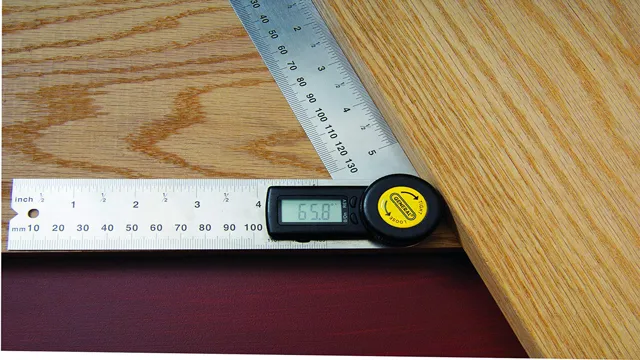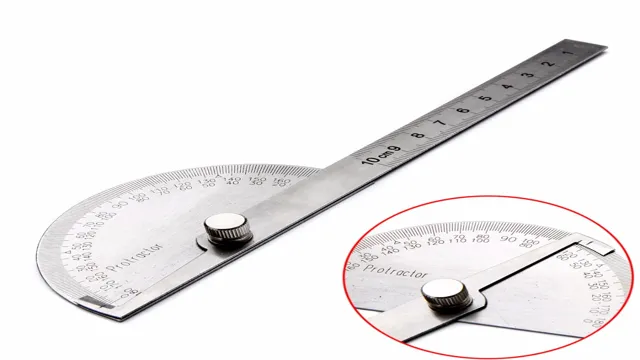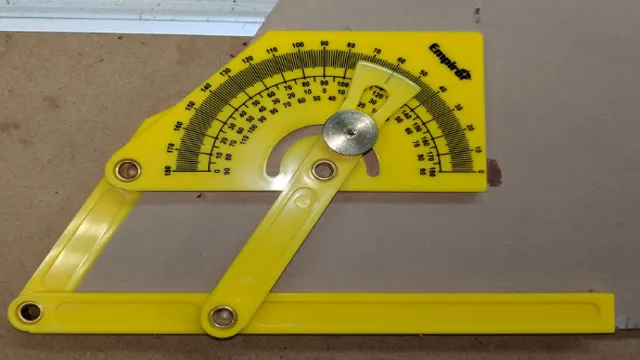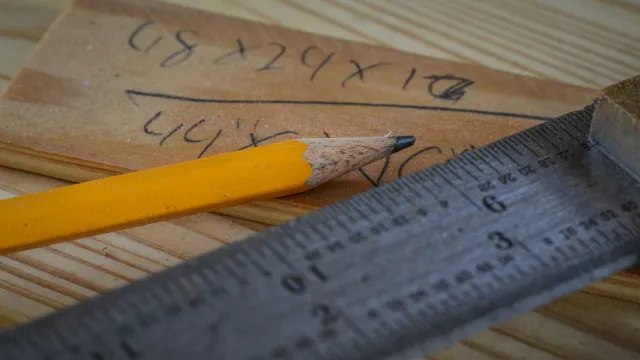How to Measure Caster with an Angle Finder: A Comprehensive Guide for Accurate Alignment
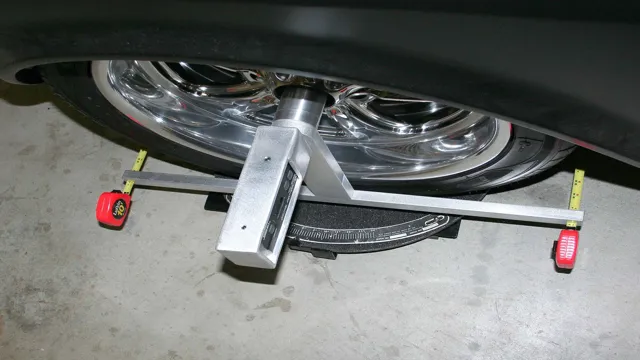
Have you ever noticed that your car is pulling to one side, or the steering seems a bit unstable? This could be due to an issue with the caster angle. The caster angle is the inclination of the steering axis when viewed from the side of the vehicle. It affects the steering stability and the vehicle’s ability to return to its straight direction.
Therefore, it is vital to measure the caster angle accurately. One simple and effective way to measure the caster angle is by using an angle finder. In this blog post, we will explore how to measure the caster angle with an angle finder and why it is necessary for your car’s safety and performance.
So, let’s dive in and learn more about this important aspect of car maintenance.
Tools You Will Need
To measure caster with an angle finder, there are a few tools that you will need. Firstly, you will require an angle finder, which is a device capable of measuring the angle between two surfaces. A magnetic angle finder is a great tool, as it attaches securely to metal surfaces and is easy to read.
Additionally, you will need a level to ensure that the angle finder is parallel to the ground, enabling accurate measurements. A ruler or tape measure is also necessary to measure distance, and a pen or pencil is useful for recording the measurements. Once you have these tools, you can accurately measure the caster angle of your vehicle’s tires.
Remember to take the time to ensure your tools are properly calibrated, and double-check measurements to avoid errors. Overall, with the right tools and a bit of practice, measuring caster with an angle finder is a simple process that will improve the performance of your vehicle.
Angle Finder
One essential tool for any DIY project or construction job is an angle finder. This tool is designed to help you determine the angle or slope of a surface accurately. To use an angle finder, you will need to ensure that the surface is clean and flat.
You will then need to place the tool on the surface and adjust it to align with the slope. Once you have done this, you can read the angle measurement from the tool. To get the most accurate reading, you may need to use a level along with the angle finder to ensure that the surface is perfectly horizontal or vertical.
With an angle finder, you can easily determine the slope of a roof, the pitch of a staircase, or the angle of a door frame. Investing in an angle finder can save you time and money on your construction projects in the long run. So, if you’re planning to do some DIY projects, don’t forget to purchase an angle finder to make your work easier and more accurate.
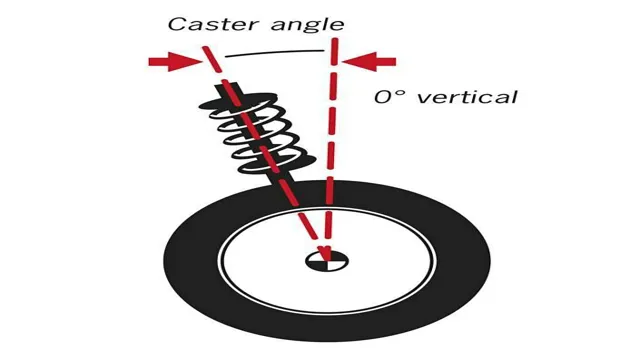
Measuring Tape
When it comes to measuring for a DIY project, a measuring tape is an essential tool to have at hand. It’s versatile and easy to use, making it ideal for measuring both small and large areas. To get the most out of your measuring tape, there are a few tools you’ll need in addition to it.
First and foremost, a level will help ensure accuracy and precision in your measurements. A pencil or marker will also come in handy for jotting down measurements or marking where cuts need to be made. Finally, a calculator can be helpful when it comes to figuring out complicated measurements or conversions.
With these tools at your disposal, you’ll be able to make quick work of any DIY project that requires precise measurements.
Finding the Starting Point
If you’re looking to improve the handling and performance of your vehicle, one essential factor to consider is caster angle. Caster is the angle between the steering axis and vertical axis of your vehicle, and measuring it accurately is crucial to ensure proper alignment and handling. One way to measure caster angle is by using an angle finder, which is a simple and inexpensive tool that you can easily get at any hardware store.
To measure caster angle, simply attach the angle finder to the steering knuckle or wheel axle and adjust the gauge until it reads zero. Then, turn the wheel and note the angle reading, which should be between two and ten degrees, depending on your vehicle’s specifications. Measuring caster angle with an angle finder is a quick and simple process that can significantly improve your vehicle’s handling and safety on the road.
Park Your Vehicle on a Level Surface
When starting any maintenance or repair project on your vehicle, it’s important to find a level surface to park on. This not only keeps you safe, but also ensures that your vehicle is on stable ground, making it easier to work on. A level surface will allow you to accurately measure and adjust parts without any slope or incline affecting your work.
But how do you find a level surface? It’s not always easy, especially if you’re out on the road. Look for a flat area that is free of any slope or incline. This could be a parking lot or driveway, but make sure there aren’t any soft spots in the ground that could cause your vehicle to sink.
You can also use a level tool to check the surface to make sure it’s truly flat. Once you’ve found your starting point, you can begin your maintenance project with confidence, knowing that your vehicle is on steady ground. Don’t underestimate the importance of finding a level surface when working on your vehicle – it could mean the difference between a successful repair and a dangerous accident.
Position the Angle Finder on the Steering Knuckle
The angle finder is an essential tool when it comes to positioning the steering knuckle. Before starting, make sure the steering knuckle is clean and free from any debris that may interfere with measurements. Place the angle finder on the steering knuckle, making sure it is level and aligned with the surface.
Adjust the angle finder if necessary until it is in the correct position. Once you have found the starting point, proceed to take necessary measurements to ensure an accurate steering alignment. This process may require patience and attention to detail, but the end result will be a smoother driving experience.
Remember to regularly check and adjust your steering alignment for optimal performance.
Measuring Caster Angle
When it comes to measuring caster angle, one tool you’ll need is an angle finder. This device allows you to measure the angle of your vehicle’s steering knuckles or strut towers relative to a vertical line, giving you a better understanding of how much caster you currently have. To use an angle finder, first, locate your vehicle’s steering knuckles or strut towers.
Then, place the angle finder against the flat surface of the knuckle or tower and zero the gauge. Next, slowly turn the steering wheel so that the knuckle or tower rotates fully left or right. Take a few measurements at different angles and average them out to get an accurate reading.
Finally, compare your measured caster angle to your vehicle’s factory specifications to determine if you need to make any adjustments. With an angle finder and a little know-how, you can easily measure your vehicle’s caster angle and ensure it’s set to the right specs for optimal handling and performance.
Take the First Reading
When it comes to measuring caster angle, it’s important to take the first reading. Caster angle refers to the angle between the steering axis and the vertical axis of a vehicle’s wheels. It affects how a vehicle handles and how it feels on the road.
To measure caster angle, you’ll need a caster angle gauge. Start by placing it on the steering knuckle and aligning the gauge with the axis of rotation. Then take your first reading and record it.
Make any adjustments necessary before taking additional readings. Remember, caster angle is important for vehicle handling, so it’s important to get an accurate reading. Once you’ve taken your measurements, make any necessary adjustments to ensure your vehicle is driving smoothly and safely.
Calculate the Caster Angle
Caster angle is an important aspect of vehicle handling and suspension. It refers to the angle between the steering axis and the vertical line drawn through the center of the wheel when viewed from the side. To measure caster angle, you need to have access to a specialized tool called an angle gauge.
This gauge is placed against the wheel hub and aligned with the steering axis. As you turn the wheel, the angle gauge will display the caster angle. A positive caster angle is when the top of the steering axis is inclined towards the rear of the vehicle.
A negative caster angle, on the other hand, is where the steering axis tilts towards the front of the car. It is important to note that the caster angle has a significant impact on the vehicle’s steering stability, cornering, and overall handling. As such, it should be checked regularly to ensure optimal performance.
So, knowing how to measure caster angle is crucial for a smooth and comfortable ride.
Take the Second Reading
If you’re looking to measure your car’s caster angle, you’ll need to take a second reading to ensure its accuracy. Caster angle is an important measurement that affects your car’s handling, stability and tire wear. It refers to the angle of the steering axis compared to vertical, and can be adjusted to improve straight-line stability or maneuverability.
To measure caster angle correctly, you’ll need a few items including a turntable, caster/camber gauge, and a jack. Once you have these items, you can begin the process of measuring your caster angle. It’s important to note that even small variances in your caster angle can affect your car’s handling, so taking a second reading ensures that you have an accurate measurement.
Make sure to double-check your calculations and adjust as necessary before making any changes to your car’s alignment.
Interpreting the Results
If you want to measure caster with an angle finder, there are a few steps you’ll need to follow. Firstly, make sure the vehicle is on a level surface and the wheels are pointing straight ahead. Then, place the angle finder on the top of the spindle or steering knuckle surface closest to the wheel.
Next, carefully turn the wheel to one side and take note of the angle reading on the finder. Repeat this process for the other wheel. A positive caster angle means the top of the steering knuckle is angled towards the back of the vehicle, while a negative caster angle means the top of the steering knuckle is angled towards the front of the vehicle.
It’s important to note that caster affects the stability and steering of the vehicle, so it’s important to have it properly adjusted if necessary. Overall, measuring caster with an angle finder is a simple and effective way to take control of your car’s performance.
Conclusion
In conclusion, measuring caster with an angle finder may sound like intimidating rocket science, but it’s actually quite simple. Just remember to set your wheels straight, place the angle finder on the wheel, and make sure you’re measuring the correct angle. With a bit of practice, you’ll be able to measure caster with ease and impress your friends with your newfound knowledge.
So go ahead, get your angle finder, and cast away!”
FAQs
What is a caster angle, and why do we need to measure it with an angle finder?
The caster angle is the angle made by the steering axis with the vertical axis of a vehicle’s wheels. We need to measure it with an angle finder to ensure the optimum handling and stability of the vehicle’s steering system.
What is the importance of having the correct caster angle in a vehicle?
The correct caster angle ensures proper tire wear, good handling, and stability, and prevents the vehicle from pulling to one side while driving. Moreover, it improves the vehicular lifespan and minimizes the risk of accidents.
Can we measure the caster angle without an angle finder, and how accurate will it be?
Yes, we can measure the caster angle without an angle finder, but the accuracy might not be as precise as it would be with an angle finder. Other methods include using a camber gauge, a string box, or a spirit level.
What are some common symptoms of an incorrect caster angle in a vehicle?
Some common symptoms of an incorrect caster angle include uneven tire wear, wandering or pulling to one side while driving, difficulty in steering, and vibration or shaking in the steering wheel.
Can we adjust the caster angle of a vehicle, and how is it done?
Yes, we can adjust the caster angle of a vehicle by altering the position of the upper or lower control arms, using caster shims, or adjusting the ride height of the vehicle. It is recommended to have it done by a professional mechanic.
Are there any particular safety precautions we need to follow while measuring or adjusting the caster angle of a vehicle?
Yes, we need to ensure that the vehicle is parked on a level surface, the wheels are properly chocked, and the steering system is turned to the center position. Moreover, we should wear safety glasses and gloves to avoid any hazards.
Can we use an angle finder to measure other angles in a vehicle, apart from the caster angle?
Yes, an angle finder can be used to measure other angles such as camber angle, toe angle, and thrust angle, which are also important for proper alignment and handling of a vehicle.

